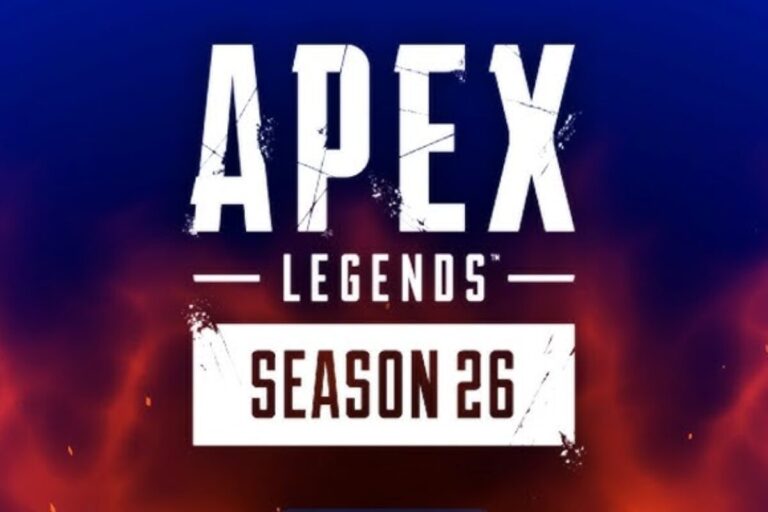Apex Legends Seasons Dates : In the fast-moving world of live-service games, Apex Legends stands out not just for its gameplay, but for how it tells its story through structure. The Apex Legends seasons dates chart isn’t merely a log of updates; it’s a timeline that captures the game’s creative heartbeat. From Wild Frontier to Prodigy, every season marks a turning point — a blend of experimentation, correction, and reinvention.
For Respawn, these seasons are less about deadlines and more about direction. Each launch and conclusion tells players where the studio’s focus lies, whether it’s refining core mechanics, rebalancing the meta, or simply giving the community space to breathe.
A Game That Redefines Itself Every Few Months – Apex Legends Seasons Dates

Few live-service titles manage to reinvent themselves as consistently as Apex Legends. Since its stealth drop in February 2019, the game has navigated through technical challenges, meta shifts, and a fiercely competitive market — yet its seasonal rhythm has remained largely intact.
Each new chapter brings its own identity. Season 3: Meltdown introduced World’s Edge, altering map strategy entirely. Season 16: Revelry skipped a new Legend, focusing instead on class reworks and weapon tuning. More recently, Season 24: Takeover adjusted combat fundamentals, removing helmets to emphasize quicker, cleaner fights.
This consistency in reinvention suggests a studio that listens as much as it leads. Rather than chasing trends, Respawn uses each season as a chance to recalibrate and reaffirm what Apex should feel like.
The Apex Legends Seasons Timeline – Apex Legends Seasons Dates

To understand the broader pattern, here’s a table of major seasons, showing their duration, notable additions, and what each symbolized in Apex’s ongoing evolution.
| Season | Duration | New Legend / Feature | Defining Focus |
|---|---|---|---|
| Preseason | Feb 4 – Mar 19, 2019 | None | Surprise launch, early meta chaos |
| Wild Frontier (S1) | Mar 19 – Jun 18, 2019 | Octane | First Battle Pass, steadying the format |
| Battle Charge (S2) | Jul 2 – Oct 1, 2019 | Wattson | Ranked mode introduction |
| Meltdown (S3) | Oct 1, 2019 – Feb 4, 2020 | Crypto | Map evolution begins |
| Revelry (S16) | Feb 14 – May 9, 2023 | None | Class system overhaul |
| Upheaval (S21) | May 7 – Aug 6, 2024 | Alter | Solos mode and Exotic Shards |
| Prodigy (S25) | May 6 – Aug 4, 2025 | Sparrow | Arenas return, balance-focused season |
Each line in this timeline marks not just content, but confidence. Apex has learned to adapt while maintaining its essence — something few long-running shooters can claim.
How Respawn’s Pacing Shapes the Experience – Apex Legends Seasons Dates

Timing is Apex’s secret weapon. Most seasons span around 88 to 92 days, enough time for excitement without fatigue. This rhythm keeps the player base synchronized, letting the community breathe between updates while still anticipating what’s next.
Still, Respawn isn’t afraid to disrupt that balance when needed. Season 3 stretched beyond four months to give players time to explore World’s Edge, while Season 7 shortened slightly to align with its Steam launch. The flexibility shows maturity — a studio no longer reacting to the market, but leading it.
These deliberate scheduling decisions aren’t random. They’re part of a larger philosophy: that pacing is as crucial to player retention as content itself.
Reading the Intent Behind the Seasons

Each Apex season reads like a chapter in Respawn’s ongoing manifesto. The studio has shifted its focus over time, aligning design priorities with evolving community expectations.
- 2019–2020: Foundation-building — testing balance, identity, and map flow.
- 2021–2022: Expansion — new worlds, new modes, and the arrival of Arenas and Control.
- 2023–2025: Refinement — fewer additions, deeper system overhauls, and meta simplification.
This evolution mirrors what live-service games like Destiny 2 and Fortnite eventually learned: sustainability beats saturation. By slowing its pace and deepening its systems, Apex transitioned from a fast-paced shooter into a platform built for longevity.
It’s why even after six years, Apex Legends still feels relevant — not because of how much it changes, but because of how intentionally it evolves.
Conclusion: The Timeline as a Mirror of Vision
The Apex Legends seasons dates are more than markers on a chart — they’re reflections of a design philosophy grounded in rhythm, response, and reinvention. Each new season isn’t just an update; it’s a statement of purpose from Respawn about what the game should represent next.
In an industry where many live-service titles burn bright and fade fast, Apex’s steady cadence stands out. It’s proof that careful timing, measured innovation, and a willingness to adapt can keep a competitive shooter thriving for years.
Looking forward, the question isn’t when the next season starts — it’s how Respawn will continue using time itself as a storytelling tool.






